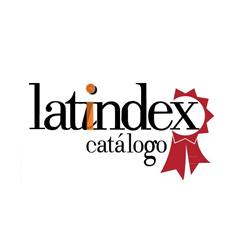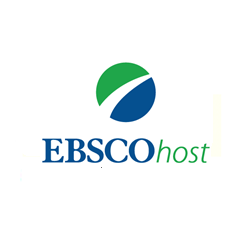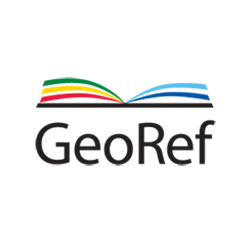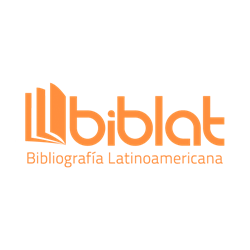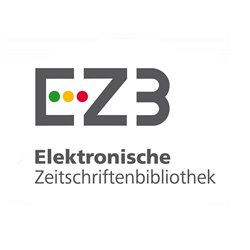Perfil de usuario para Internet de las cosas basado en ontologías
DOI:
https://doi.org/10.17981/ingecuc.20.1.2024.07Palabras clave:
Perfil de Usuario, Contexto, Ontología, Internet de las Cosas (IoC), Semantic WebResumen
Determinar el contexto en el que se encuentra el usuario es clave para personalizar los servicios en Internet de las cosas. Por lo tanto, se requiere un mecanismo genérico, semántico e interoperable que gestione el perfil del usuario. Se propone un mecanismo de gestión de perfil de usuario para IoT que utiliza ontologías para modelar las preferencias del usuario y su contexto según su ubicación y las actividades que están ejecutando. Esto permite a los usuarios establecer preferencias en objetos inteligentes que crean servicios personalizados con una intervención humana mínima. La metodología utilizada en la creación de esta ontología de perfil de usuario facilita la construcción rápida de un modelo formal y evolutivo. Para validar la solución, se adoptó un estudio de caso que incorporó usuarios reales y midió su capacidad para personalizar los servicios proporcionados. Los resultados sugieren que la ontología ofrece una buena solución para este tipo de escenario que adapta sus servicios a las características y el contexto del usuario. Las pruebas verificaron que los servicios se ajustaron automáticamente en un tiempo aceptable (52 segundos) en comparación con los ajustes manuales que podrían requerir varios minutos.
Descargas
Citas
K.-L. Skillen, L. Chen, C. D. Nugent, M. P. Donnelly, W. Burns, and I. Solheim, “Ontological user modelling and semantic rule-based reasoning for personalisation of Help-On-Demand services in pervasive environments,” Futur. Gener. Comput. Syst., vol. 34, pp. 97–109, 2014, doi: http://dx.doi.org/10.1016/j.future.2013.10.027.
A. Wagner, J. L. V. Barbosa, and D. N. F. Barbosa, “A model for profile management applied to ubiquitous learning environments,” Expert Syst. Appl., vol. 41, no. 4 PART 2, pp. 2023–2034, Mar. 2014, doi: 10.1016/j.eswa.2013.08.098.
C.-H. Lin, P.-H. Ho, and H.-C. Lin, “Framework for NFC-Based Intelligent Agents: A Context-Awareness Enabler for Social Internet of Things,” Int. J. Distrib. Sens. Networks, vol. 2014, p. 16, 2014, doi: 10.1155/2014/978951.
M. G. Kibria and I. Chong, “Context-awareness provisioning to support user-centric intelligence in Web of Object platform,” in Information and Communication Technology Convergence (ICTC), 2015 International Conference on, 2015, pp. 388–392, doi: 10.1109/ictc.2015.7354570.
A. B. Rodriguez, A. R. Tena, J. Garcia-Alonso, J. Berrocal, R. F. Rosco, and J. M. Murillo, “Using Beacons for Creating Comprehensive Virtual Profiles BT - Ubiquitous Computing and Ambient Intelligence,” 2016, pp. 295–306.
J. Berrocal, J. Garcia-Alonso, C. Canal, and J. M. Murillo, “Situational-Context: A Unified View of Everything Involved at a Particular Situation BT - Web Engineering,” 2016, pp. 476–483.
Q. Wei and Z. Jin, “Service discovery for internet of things: a context-awareness perspective,” Proceedings of the Fourth Asia-Pacific Symposium on Internetware. ACM, Qingdao, China, pp. 1–6, 2012, doi: 10.1145/2430475.2430500.
S. S. Ara, Z. U. Shamszaman, and I. Chong, “Web-of-Objects Based User-Centric Semantic Service Composition Methodology in the Internet of Things,” Int. J. Distrib. Sens. Networks, vol. 2014, p. 11, 2014, doi: 10.1155/2014/482873.
D. Guinard, M. Fischer, and V. Trifa, “Sharing using social networks in a composable Web of Things,” in Pervasive Computing and Communications Workshops (PERCOM Workshops), 2010 8th IEEE International Conference on, 2010, pp. 702–707, doi: 10.1109/percomw.2010.5470524.
D. van Thuan, P. Butkus, and D. van Thanh, “A User Centric Identity Management for Internet of Things,” in IT Convergence and Security (ICITCS), 2014 International Conference on, 2014, pp. 1–4, doi: 10.1109/ICITCS.2014.7021724.
Y. Ashibani, D. Kauling, and Q. H. Mahmoud, “A context-aware authentication framework for smart homes,” in 2017 IEEE 30th Canadian Conference on Electrical and Computer Engineering (CCECE), 2017, pp. 1–5, doi: 10.1109/CCECE.2017.7946657.
L. Yao, “A Propagation Model for Integrating Web of Things and Social Networks,” in Service-Oriented Computing - ICSOC 2011 Workshops, 2012, pp. 233–238.
C. Perera, A. Zaslavsky, P. Christen, and D. Georgakopoulos, “Context Aware Computing for The Internet of Things: A Survey,” Ieee Commun. Surv. Tutorials, 2013, [Online]. Available: http://arxiv.org/abs/1305.0982.
B. Kim, T. Kim, H.-G. Ko, D. Lee, S. J. Hyun, and I.-Y. Ko, “Personal genie: a distributed framework for spontaneous interaction support with smart objects in a place,” Proceedings of the 7th International Conference on Ubiquitous Information Management and Communication. ACM, Kota Kinabalu, Malaysia, pp. 1–10, 2013, doi: 10.1145/2448556.2448653.
G. Biamino, “A Semantic Model for Socially Aware Objects,” Adv. Internet Things, 2012.
L. Console et al., “Interacting with social networks of intelligent things and people in the world of gastronomy,” ACM Trans. Interact. Intell. Syst., vol. 3, no. 1, pp. 1–38, 2013, doi: 10.1145/2448116.2448120.
K.-L. Skillen, C. Nugent, M. Donnelly, L. Chen, and W. Burns, “Using Ontologies for Managing User Profiles in Personalised Mobile Service Delivery,” in Health Monitoring and Personalized Feedback using Multimedia Data, A. Briassouli, J. Benois-Pineau, and A. Hauptmann, Eds. Cham: Springer International Publishing, 2015, pp. 245–264.
Maria Golemati, Akrivi Katifori, Costas Vassilakis, George Lepouras, and C. Halatsis, “Creating an Ontology for the User Profile: Method and Applications,” Proc. First Int. Conf. Res. Challenges Inf. Sci., 2007.
A. Otebolaku and G. M. Lee, “A Framework for Exploiting Internet of Things for Context-Aware Trust-Based Personalized Services,” Mob. Inf. Syst., vol. 2018, 2018, doi: 10.1155/2018/6138418.
F. Corno, L. De Russis, and A. M. Roffarello, “How do end-users program the Internet of Things?,” Behav. Inf. Technol., vol. 41, no. 9, pp. 1865–1887, 2022, doi: 10.1080/0144929X.2022.2071169.
S. P. Gochhayat et al., “LISA: Lightweight context-aware IoT service architecture,” J. Clean. Prod., vol. 212, pp. 1345–1356, 2019, doi: 10.1016/j.jclepro.2018.12.096.
H. Ning, F. Shi, T. Zhu, Q. Li, and L. Chen, “A novel ontology consistent with acknowledged standards in smart homes,” Comput. Networks, vol. 148, pp. 101–107, Jan. 2019, doi: 10.1016/J.COMNET.2018.11.004.
M. A. Niño-Zambrano, “Interacción semántica de objetos en la web de las cosas,” Universidad del Cauca, Popayán - Cauca - Colombia, 2016.
S. Guerrero-Narváez, M. Niño-Zambrano, D.-J. Riobamba-Calvache, and G.-A. Ramírez-González, “Test bed of semantic interaction of smart objects in the web of things,” Futur. Internet, vol. 10, no. 5, 2018, doi: 10.3390/fi10050042.
O. Corcho, M. Fernández-López, A. Gómez-Pérez, and A. López-Cima, “Building legal ontologies with METHONTOLOGY and WebODE,” Law Semant. Web, 2005, [Online]. Available: http://link.springer.com/chapter/10.1007/978-3-540-32253-5_9.
D. Bonino and F. Corno, “DogOnt - Ontology Modeling for Intelligent Domotic Environments,” in The Semantic Web - ISWC 2008: 7th International Semantic Web Conference, ISWC 2008, Karlsruhe, Germany, October 26-30, 2008. Proceedings, A. Sheth, S. Staab, M. Dean, M. Paolucci, D. Maynard, T. Finin, and K. Thirunarayan, Eds. Berlin, Heidelberg: Springer Berlin Heidelberg, 2008, pp. 790–803.
P. Runeson and M. Höst, “Guidelines for conducting and reporting case study research in software engineering,” Empir. Softw. Eng., vol. 14, no. 2, p. 131, 2008, doi: 10.1007/s10664-008-9102-8.
R. H. Sampieri, C. F. Collado, M. del P. B. Lucio, and McGRAW-HILL, Metodología de la Investigación, Sexta Edic. 2014.
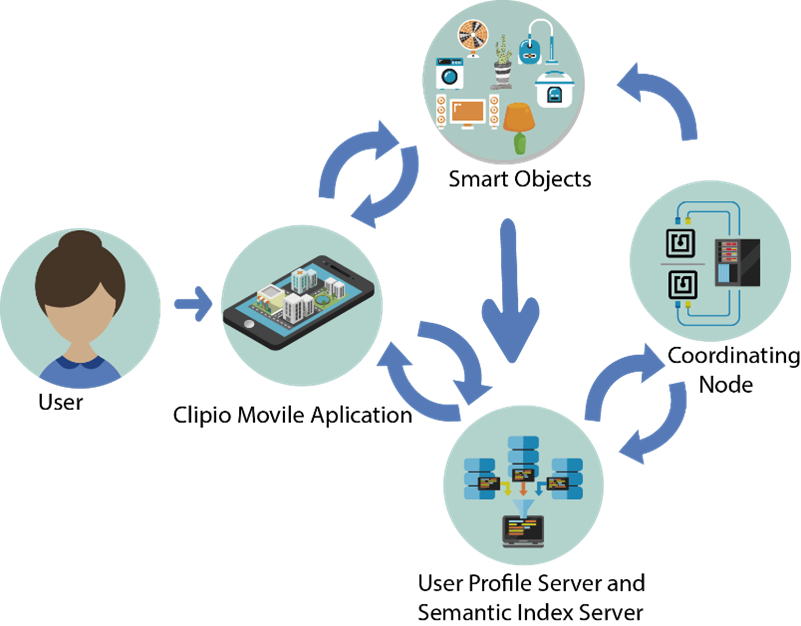
Descargas
Publicado
Cómo citar
Número
Sección
Licencia
Derechos de autor 2024 Inge Cuc

Esta obra está bajo una licencia internacional Creative Commons Atribución-NoComercial-SinDerivadas 4.0.
Los artículos publicados son de exclusiva responsabilidad de sus autores y no reflejan necesariamente las opiniones del comité editorial.
La Revista INGE CUC respeta los derechos morales de sus autores, los cuales ceden al comité editorial los derechos patrimoniales del material publicado. A su vez, los autores informan que el presente trabajo es inédito y no ha sido publicado anteriormente.
Todos los artículos están bajo una Licencia Creative Commons Atribución-NoComercial-SinDerivadas 4.0 Internacional.


 English
English
 Español (España)
Español (España)


